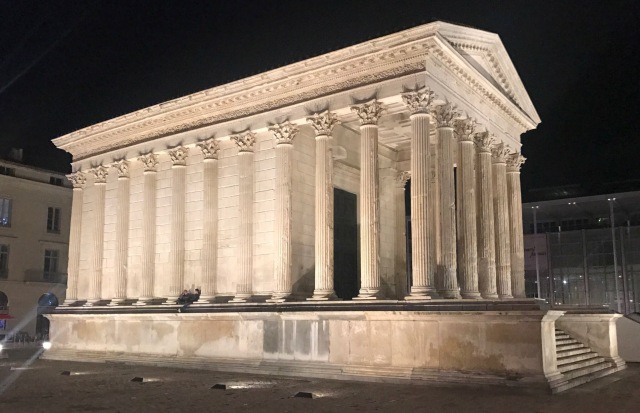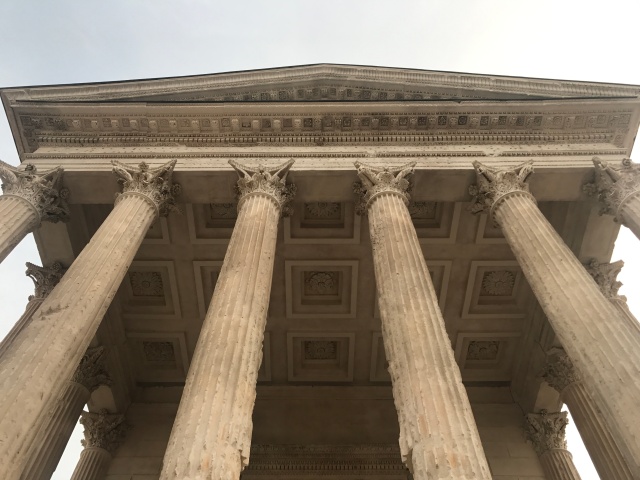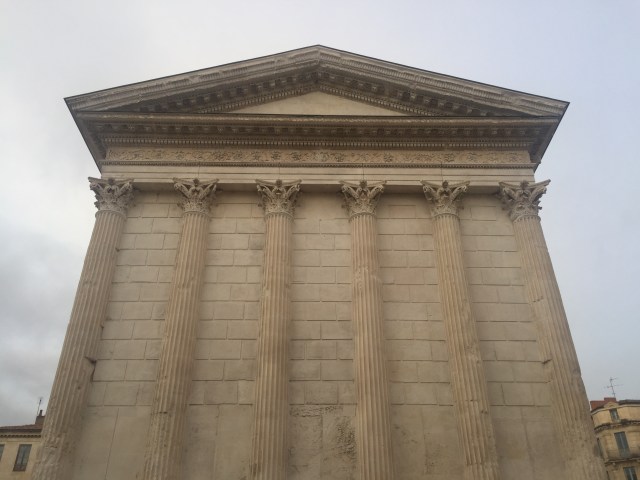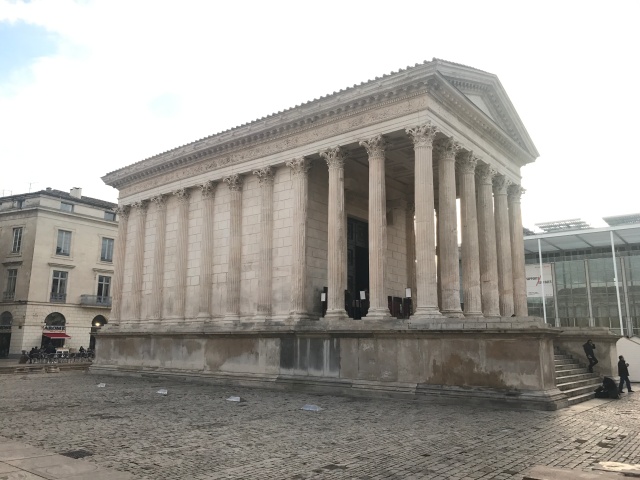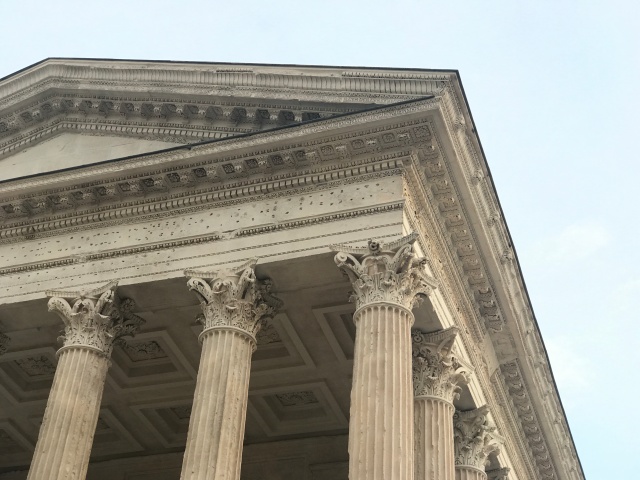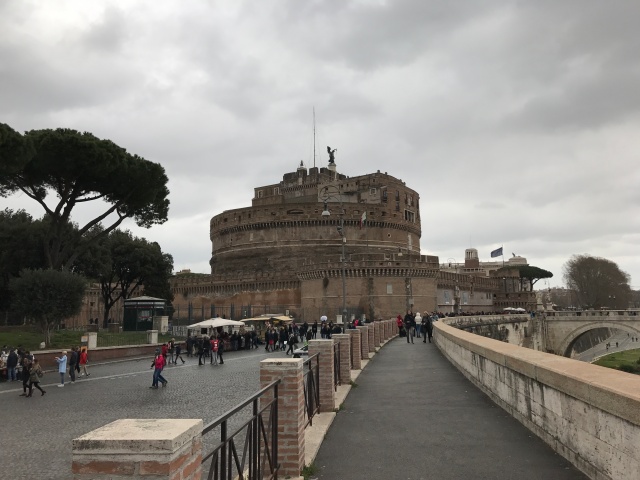
Overall Rating ****** 6 stars – stunning mosaics in sites across the City
Other Wow Factor! The mosaics will blow your socks off!
Ravenna has been called the ‘Late Roman Pompeii’. The marketing hype does not quite work since unlike Pompeii Ravenna has been continuously inhabited. However it does contain the largest assembly of surviving Late Roman mosaics in a collection of remarkable buildings of the 5th and 6th Centuries.
The fact that although they are in one place over a period of 150 years and are stylistically similar, they are variously classified as Later Roman (or Late Antiquity), Ostrogothic or Byzantine demonstrates how fast the Mediterranean World was changing. This is why we are writing this introduction to Ravenna to save repeating the history at each site.
This history is complex. In the 4th Century Constantine and his dynasty, followed by Valentinian and his dynasty waged largely successful defensive wars against invading German tribes – Franks, Goths, Huns and Vandals. They also divided the Empire into more easily defended zones, sometimes East and West but often more complicated, which although better defensively, resulted in destructive civil wars between rival Augusti who wanted to rule the whole Roman World. These wars sapped the fighting strength of the field armies and the economic sustainability of the Empire. Also German mercenaries and recruits became integrated not just into the armies, but also the high command of the Roman state.
Theodosius I (379-395) restored the East after the calamitous defeat by the Goths at Adrianople in 378. He conquered the West twice, defeating his rivals at the Battle of Frigidus in 394, using German mercenaries as well as the Eastern Field Army to defeat the West. He then died in Milan in 395, leaving the East to his eldest son Arcadius and the West to his younger son Honorius. Guided by his half Vandal generalissimo Stilicho, Honorius ruled from Milan, but when in 402 Alaric and the Visigoths began rampaging round Italy, he retreated to Ravenna.
Ravenna was safe since it was surrounded by marshes and connected by a deep water canal to the long time Roman port and fleet base at a Classis. It remained the “capital” of Italy until 751. Ravenna in this period was the most prosperous city in the West, since it was the seat of authority and the principal port between Eastern and Western Empires. There is evidence for more than 60 churches in use at this time. Rome in contrast was sacked 6 times, its aqueducts cut and its grain supply from Egypt and North Africa stopped, declined catastrophically.
The magnificent surviving churches of Ravenna and their mosaics are connected with three great personalities of the period: the Augusta (Empress) Galla Placidia, the Ostrogothic King Theodoric and Bishop Maximian of Ravenna.
Galla Placidia was the half sister of Honorius, and after the Visigothic Sack of Rome by Alaric in 410, she was taken by the Goths as a hostage, and married in 414 to Alaric’s successor Athaulf. On Athaulf’s death she returned to the Empire and joined Honorius in Ravenna. She married the consul and general Constantius in Ravenna, who briefly deposed Honorius in 421. After his death Galla Placidia was banished to Constantinople. After Honorius’ death in 423 she returned to Ravenna in 425, ruling what was left of the Western Empire as Augusta, in her own right and in the name of her son Valentinian III. She died in Rome in 450, and Valentinian was murdered in 455.

Galla Placidia was the most important church builder in Ravenna over this period and built St John the Evangelist, in thanks for her safe return from Constantinople by sea in 425.

She also built a large cross shaped church, to house a relic of the True Cross (Santa Croce). Attached to the southern end of the narthex (vestibule) of Santa Croce she also built a smaller cross shaped building, which is traditionally seen (certainly from the 9th century) as the Mausoleum of Galla Placidia.
A Late Roman capital city must have a Cathedral and there is evidence that the Basilica Ursiana, was built by Bishop Ursus in the last decade of the 4th Century. Alas the original cathedral was demolished in 1733! However the baptistry built by Bishop Neon around 458 survives and is known as the Neonian Baptistry or the Baptistry of the Orthodox for reasons which will soon be apparent. Also around the end of the 5th Century, Bishop Peter II decorated a chapel with mosaics, now known as the Capella Arcivescovile.
After Valentininan III’s murder, the Western Empire spiralled into extinction with Emperors little more than puppets of their Germanic generalissimos, until in 476 the last Emperor appropriate called Romulus Augustus was deposed by Odavacer the Herul, sending the Imperial insignia to Constantinople and ruling Italy nominally in the name of the Eastern Emperor Zeno. By this time Spain and South West Gaul were in the hands of the Visigoths, Africa the Vandals and the rest of Gaul the Franks and Burgundians – Britain had long departed the imperial orbit, losing the use of money and central administration.
Zeno encouraged the Ostrogothic leader Theodoric to attack Odavacer and Theodoric took Ravenna in 493, stabbing it is said, his adversary to death in the Ad Laurata Palace in the City. Theodoric was recognised as King of Italy by the Eastern Emperor Anastasius (491-518).
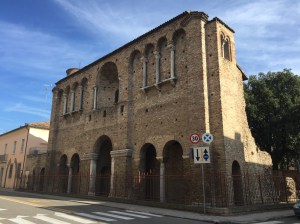
Theodoric was a Goth but no barbarian. He had been brought up in the Imperial Palace in Constantinople as privileged hostage. He ran Italy with the advice of Romans like the philosopher Boethius and the administrator Cassiodorus. Theodoric built himself a Palace in Ravenna, and its principal gate was known as the Chalke (bronze) Gate, like the gate of the palace in Constantinople.
Theodoric was a Goth and a Christian. The Goths were converted in the mid 4th Century by Bishop Ulfilas. Ulfilas followed the then prevailing orthodoxy of the Emperor Constantius of Arianism. That is he followed Arius of Alexandria in believing that because Christ had been created by God he could not be fully divine. This view of the Trinity was over-thrown at the Council of Constantinople in 381 when the doctrine of the Father Son and Holy Ghost Trinity won the day, and Arians became heretics. So when Theodoric took over Ravenna and Italy the Arians were in charge. Theodoric built a huge Arian basilica next to his Palace, which is now called S. Apollinare in Nuovo. On Theodoric’s death in 526 he was buried in a splendid stone Mausoleum.

He was succeeded by his daughter Queen Amalaswentha, who ruled in the name of her son or husband until 536, when she was succeeded by King Vitiges. In 535 the Eastern Emperor Justinian launched a campaign to recapture Italy lead by his general Belisarius, who captured Ravenna in 540. From then until 751, Ravenna was the seat of the Exarch who ruled whatever lands Constantinople held in Italy.
The arrival of Belisarius meant that the heretic Arians had been defeated and in 561 Theodoric’s Palace Church was rededicated and he and his court removed from the mosaics.


The next great phase of building in Ravenna is associated with Bishop Maximian the orthodox bishop who arrived in 546. Bishop Maximian dedicated S. Vitale in the City in 547, and S. Apollinare in Classe in 549, at the port some 5kms outside. However it should be noted that both of these magnificent buildings were begun long before Maximian’s arrival and even before the Eastern Empire’s take-over of Ravenna in 540. We know that they were both funded by one Julianus Argentarius, a banker. So although totally Byzantine – the Imperial couple Justinian and Theodora feature on the mosaics, these churches also represent continuity across regime change in Ravenna.
In addition to the magnificent churches and palaces Ravenna must have had fine buildings to house the administrators and generals of the Roman, Gothic and Byzantine regimes. Most of these houses and baths have disappeared, but in the so-called House of Stone Carpets, we can see just how magnificent these dwellings would have been.
Ravenna eventually fell to the Lombards and then the Franks, Charlemagne borrowing statues and ideas for his new Holy Roman Empire capital in Aachen. It is a remarkable survival of Roman Christian culture of different kinds, that disappeared from the West after the 8th and 9th Centuries.
